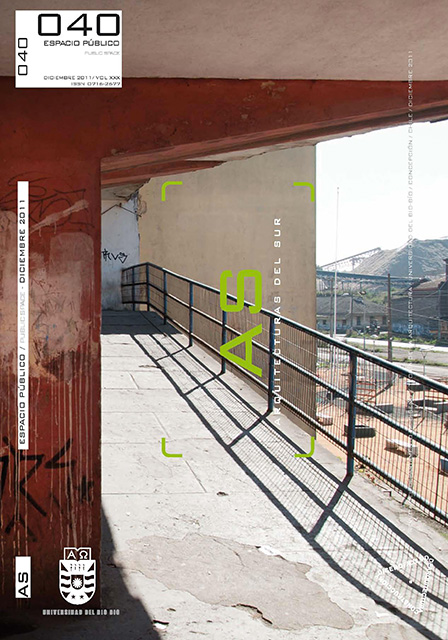Cohabited space: Proposals on the spatial ambiguity of Valparaíso
Keywords:
spatial ambiguity, heritage, self-build, Valparaíso, daily occurrenceAbstract
The city being built today and the market model preceding it seem to be ever reducing the spaces available for day-to-day encounters and a variety of person-to-person relationships. The creation of "non-places", housing standardization and the proliferation of ubiquitous infrastructure predominates in a landscape of excess and vacuity. This is why a city like Valparaíso emerges as an anachronic and apparently obsolete model on the surface, but in its depths reveals a diversity of forms of urban relationships.
What gives Valparaíso such singular qualities?
The following article tries to explain the incidence of self-build housing on the diverse day-to-day relationships within the city, which in turn come to constitute new, ambiguous and complex forms of cohabitation. The study is based on the results of experiential research work in the Cerro Cordillera titled "the unfinished house".
Downloads
Downloads
Published
How to Cite
Issue
Section
License
The content of the articles published in each issue of Arquitecturas del Sur is the sole responsibility of the authors and does not necessarily represent the opinion of University of the Bío-Bío.
The authors will maintain their copyright; however, they will guarantee the journal the right to first publication and dissemination of their work. The publication of the article in Arquitecturas del Sur will be subject to the Creative Commons International license (CC BY-SA) that allows others to adapt: remix, transform and build on the material for any purpose, even commercially; share: copy and redistribute the material in any medium or format, as long as the authorship and first publication in this journal are acknowledged by citing them correctly, and their new contributions are under a license with the same terms.














 Programa de Información Científica/Concurso Fondos de Publicación de Revistas Científicas 2018/ Proyecto Mejoramiento de Visibilidad de Revistas UBB (Código:FP180007)
Programa de Información Científica/Concurso Fondos de Publicación de Revistas Científicas 2018/ Proyecto Mejoramiento de Visibilidad de Revistas UBB (Código:FP180007) 
